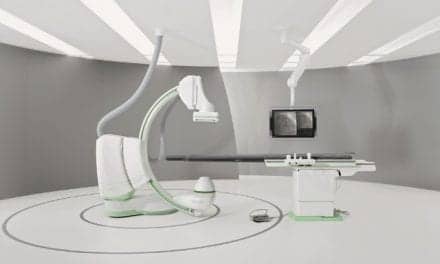 |
The news whipped through the American Healthcare Radiology Administrators (AHRA) conference in the sweltering city of Las Vegas last month like an arctic wind. Michael Colombini, 6-years-old, had succumbed to blunt force trauma to the head, suffered when a ferrous oxygen canister was sucked into the bore of an MRI scanner.
Speculation on the causes was prolific, and though it would be some days before the precise chain of events was known, the mood among attendees was decidedly solemn. To the credit of Westchester Medical Center, Valhalla, NY, where the incident occurred, an inquiry into the accident was immediately undertaken and a report developed, which outlined a series of 16 safety lapses that led to the tragedy. Among them were a poorly designed oxygen system; failure to identify and secure the restricted magnetic field area; ineffective education of staff members about the dangers of a magnetic field; storage of metal materials in the MRI room; absence of a policy for oxygen use in the MRI room; and poor communications between physician and MRI technologists. To the 16 lapses, we contribute our own litany of factors that every day conspire against careful performance of duties: understaffed departments, a technologist and radiologist shortage, downward pressure on reimbursement, and jammed emergency departments.
Last month, the AHRA announced that it would establish a credentialing program for radiology administrators, funded by a generous grant from an imaging vendor. Currently in the formative stages, the program will ensure that the credentialed administrator exhibit competency in all skills and subjects requisite to running a radiology service. This announcement was not related to the untimely death of Michael Colombini, but it certainly underscores the need for a radiology-specific administration credential.
In the wake of the accident, the American College of Radiology (ACR) announced that it had selected Emanuel Kanal, MD, director of Magnetic Resonance Services and professor of radiology and neuroradiology at the University of Pittsburgh Medical Center (UPMC), to chair a panel on MRI safety. Kanal, recognized internationally as an expert in MRI safety, helped to author the existing ACR guidelines on MRI patient safety. He serves as safety consultant for the US Food and Drug Administration and is webmaster for the international MR Safety Web site (http://kanal.arad.upmc.edu/mrsafety.html). Kanal also was retained by Westchester Medical Center to evaluate newly implemented safety measures and lecture to staff members.
Kanal told a reporter that access to the UPMC MRI suite is restricted by dividing it into three zones: Zone 1 encompasses the public hallways and waiting area; Zone 2 is entered only with an access card and is comprised of the outer ring of the nurses station, sedation area, and recovery room; Zone 3 is behind another set of locked doors and can be entered only by trained staff members or people in the company of those staff members. Kanal emphasized that there are no exceptions to that rule and that the technologist is his last line of defense.1
Bad things happen to good people all of the time. But fewer accidents happen to careful people. And the best way to make people careful in radiology is to educate and re-educate them on the dangers inherent in the practice and then implement the necessary safety precautions and processes.
Cheryl Proval
References:
- Klein M. Expert to review Westchester MRI. The Journal News. August 26, 2001. Available at: http://www.thejournalnews.com/newsroom/082601/26mrisafety.html. Accessed August 28, 2001.
Related Links:




